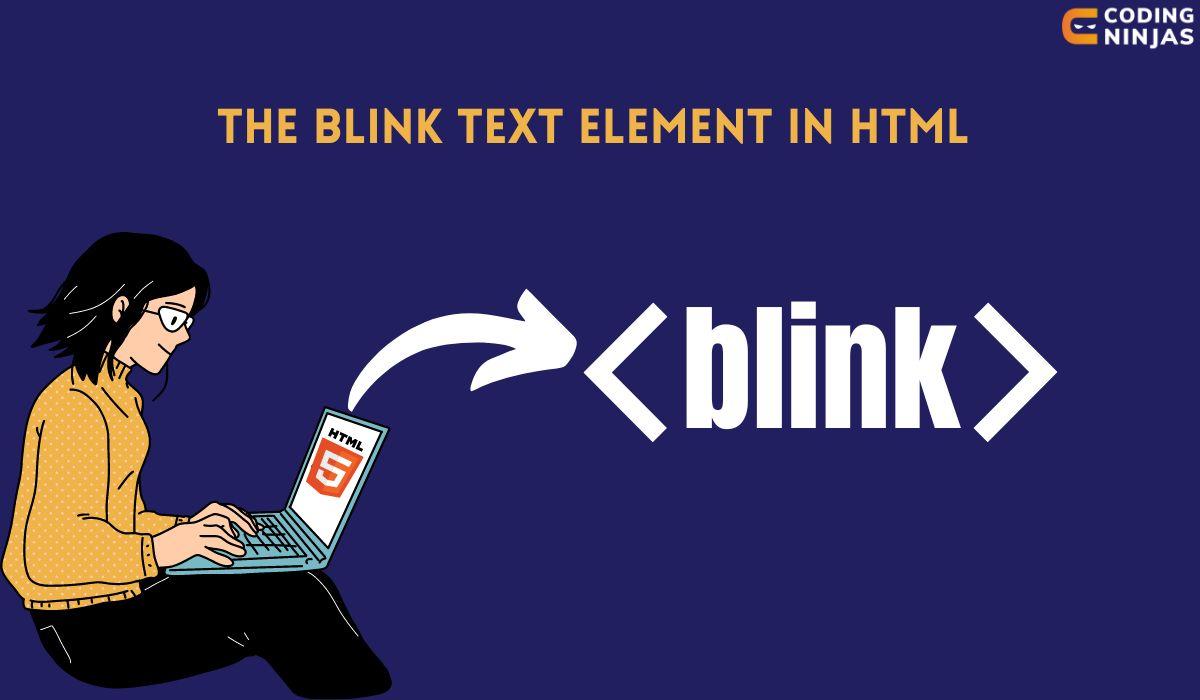Blink HTML: Figuring out the Inheritance and Current Other Options
HTML, the foundation of web improvement, has advanced altogether since its commencement. One of the less popular but intriguing components with regards to HTML’s set of experiences is the ‘<blink>’ tag. This article dives into the Blink HTML tag, its set of experiences, its use, and the advanced options that have supplanted its usefulness.
The starting points of the ‘<blink>’ Tag
The ‘<blink>’ tag was presented in the beginning of the web by Netscape Pilot, one of the main internet browsers. Its motivation was basic: to make text squint on and off, accordingly causing people to notice it. Regardless of its effortlessness, the ‘<blink>’ tag immediately turned into a subject of contention because of its true capacity for abuse and its absence of help across various programs.
Why was the ‘<blink>’ tag made?
During the 1990s, web improvement was in its early stages, and website specialists were anxious to explore different avenues regarding ways of making their pages really captivating. The ‘<blink>’ label offered a clear method for featuring significant text by making it flicker. This was especially valuable in catching the client’s eye for declarations, alerts, or commercials.
The most effective method to utilize the ‘<blink>’ Tag
The grammar of the ‘<blink>’ tag is very straightforward. It epitomizes the text that is necessary to squint. Here is a model:
”’html
<!DOCTYPE html>
<html>
<head>
<title>Blink Example</title>
</head>
<body>
<blink>This text will blink.</blink>
</body>
</html>
”’
At this point, when seen in a program that upholds the ‘<blink>’ tag, the encased text will squint.
The End of the ‘<blink>’ Tag
The ‘<blink>’ tag, while inventive, confronted a few difficulties. Its absence of help in significant programs and the disturbance it caused among clients prompted its downfall.
Program Similarity Issues
From its presentation, the ‘<blink>’ tag was just upheld by Netscape Pilot. Different programs, like Web Pioneer and early variants of Firefox, didn’t uphold it. This absence of cross-program similarity restricted its handiness, as web designers expected to make pages that worked all around.
Client Experience Concerns
The flickering text immediately turned into an irritation for numerous clients. It was many times abused and abused, prompting a negative client experience. Continually squinting text could be diverting and irritating, degrading the general ease of use of a site.
Availability Issues
For people with specific incapacities, for example, those with visual debilitations or epilepsy, flickering text could present huge availability issues. The consistent blazing could set off seizures in photosensitive people or make content unintelligible for those with vision issues.
Censure and Evacuation
Because of these issues, the ‘<blink>’ tag was belittled in the HTML 4.0 determination and ultimately eliminated from the HTML 5 detail. Present day programs never again support it, and web designers are urged to involve CSS or JavaScript for any vital message liveliness.
Present day options for the ‘<blink>’ tag
While the ‘<blink>’ tag is out of date, the requirement for eye catching text has not vanished. Present day web advancement offers a few options utilizing CSS and JavaScript that are more controlled and easy to understand.
CSS Livelinesss
CSS gives a strong method for creating liveliness without depending on JavaScript. Utilizing the ‘@keyframes’ rule, designers can characterize custom liveliness, including squinting impacts.
Model: Squinting Text with CSS
This is the way you can make a squinting text impact using CSS:
”’html
<!DOCTYPE html>
<html>
<head>
<title>Blink with CSS</title>
<style>
.squint {
movement: flicker liveliness 1s steps(5, begin) limitless;
-webkit-movement: flicker liveliness 1s steps(5, begin) limitless;
}
@keyframes squint liveliness {
to {
perceivability: stowed away;
}
}
@-webkit-keyframes flicker liveliness {
to {
perceivability: stowed away;
}
}
</style>
</head>
<body>
<div class=”blink”>This text will blink utilizing CSS.</div>
</body>
</html>
”’
In this model, the ‘@keyframes’ rule characterizes a liveliness named ‘flicker activity’ that flips the perceivability of the text. The activity is applied to the ‘.flicker’ class, which can be doled out to any HTML component to make it squint.
JavaScript for more control
JavaScript offers more command over movements and intelligence. With JavaScript, you can make complex movements, control their timing, and conduct them powerfully.
Model: Squinting Text with JavaScript
This is an illustration of how to accomplish a squinting impact utilizing JavaScript:
”’html
<!DOCTYPE html>
<html>
<head>
<title>Blink with JavaScript</title>
<style>
.squint {
show: inline;
}
</style>
<script>
capability blinkText() {
var squints = document.getElementsByClassName(‘blink’);
for (var I = 0; I < blinks.length; i++) {
if (blinks[i].style.visibility === ‘stowed away’) {
blinks[i].style.visibility = ‘apparent’;
} else {
blinks[i].style.visibility = ‘stowed away’;
}
}
}
setInterval(blinkText, 1000);
</script>
</head>
<body>
<div class=”blink”>This text will blink utilizing JavaScript.</div>
</body>
</html>
”’
This content flips the perceivability of components with the class ‘Blink’ consistently, making a squinting impact.
Best Practices for Eye-Ccatching Text
While flickering messages can be valuable, it’s vital to utilize such impacts sensibly to maintain a decent client experience and openness.
Use Sparingly
A lot of flickering text can overpower clients and degrade the substance of your site. Utilize squinting impacts sparingly and just for basic data that really needs to stick out.
Give Options
Guarantee that the data conveyed by squinting text is likewise accessible in a non-flickering organization. This approach is critical for availability, permitting clients who can’t see the flickering text to get to the data.
Test Across Gadgets and Programs
Continuously test your site across various gadgets and programs to guarantee that your movements work accurately and don’t cause issues for clients.
Think about openness.
While carrying out flickering text, be aware of clients with inabilities. Try not to make impacts that could set off seizures or make content muddled. Use ARIA (Available Rich Web Applications) jobs and properties to improve openness.
End
The ‘<blink>’ tag is a remnant of early web improvement, remembered more for its reputation than its utility. While it filled a need at the right time, current web improvement rehearsals offer more compelling and easy-to-understand ways of causing people to notice text. By utilizing CSS and JavaScript, designers can create complex activities that improve the client experience without the entanglements related to the old ‘<blink>’ tag.
As we push ahead in the steadily advancing universe of web advancement, understanding the set of experiences and examples of components like ‘<blink>’ assists us with valuing the significance of making web content that is both drawing in and open. By utilizing current procedures and sticking to best practices, we can assemble sites that charm clients and give a comprehensive encounter to all.






























+ There are no comments
Add yours